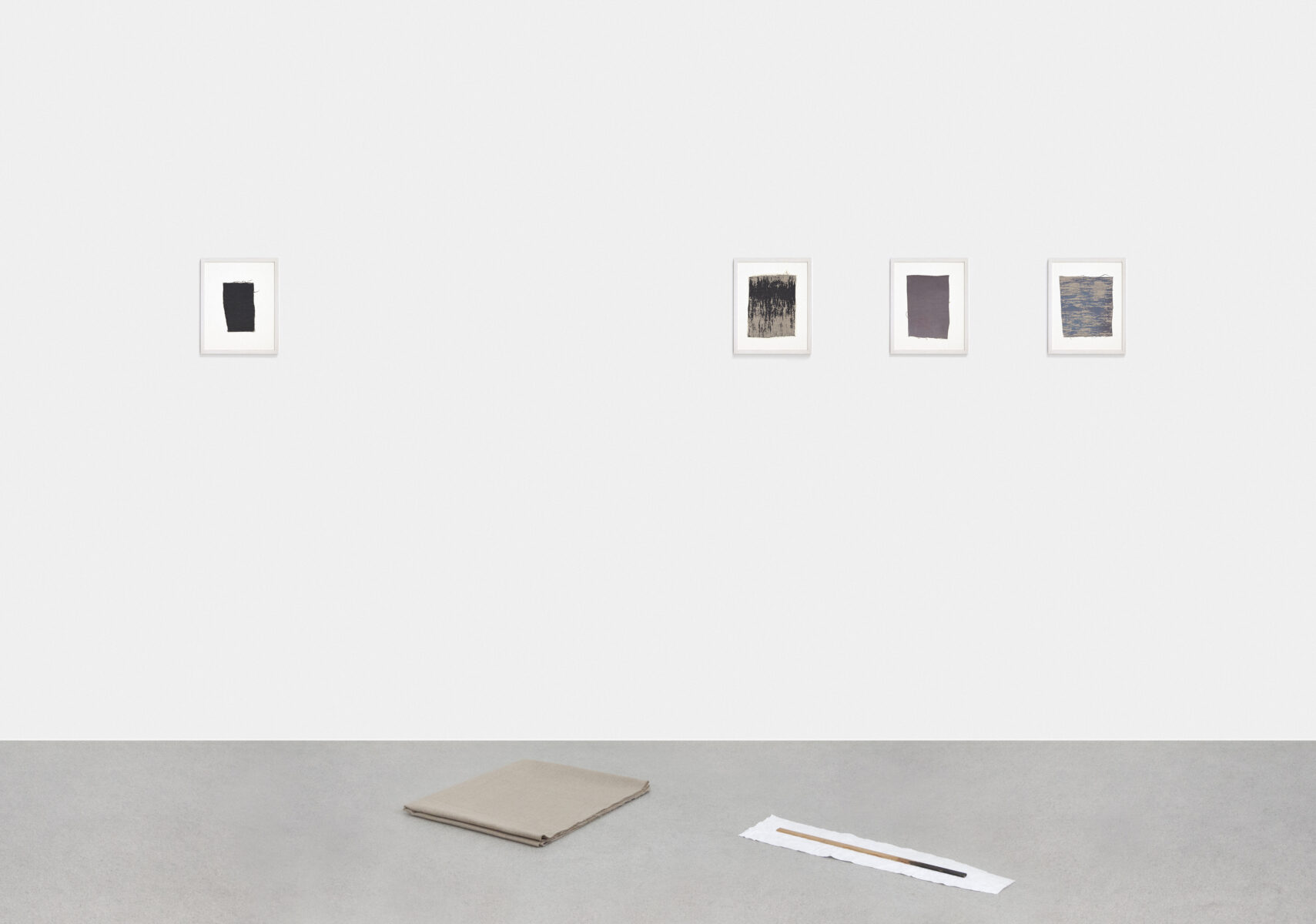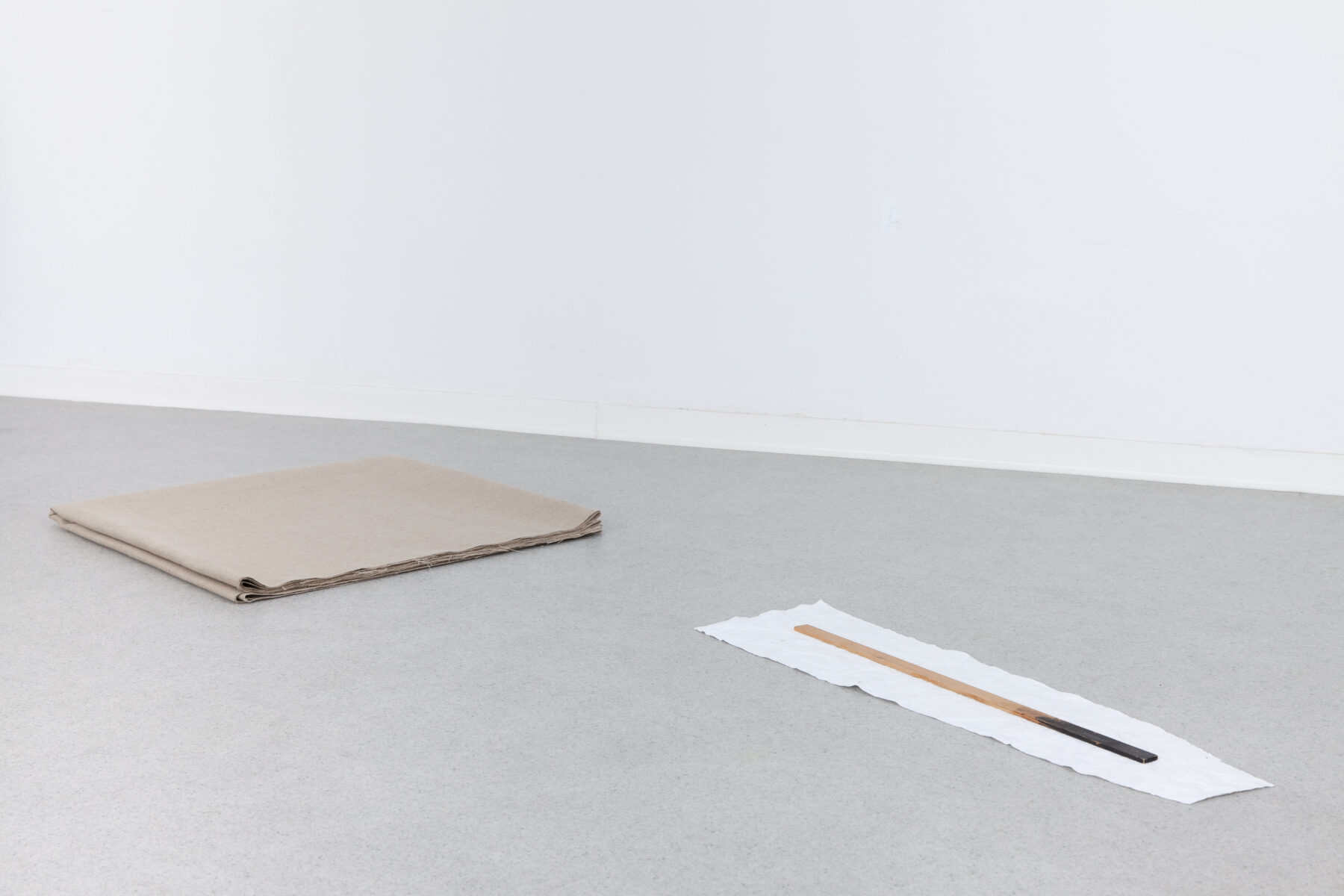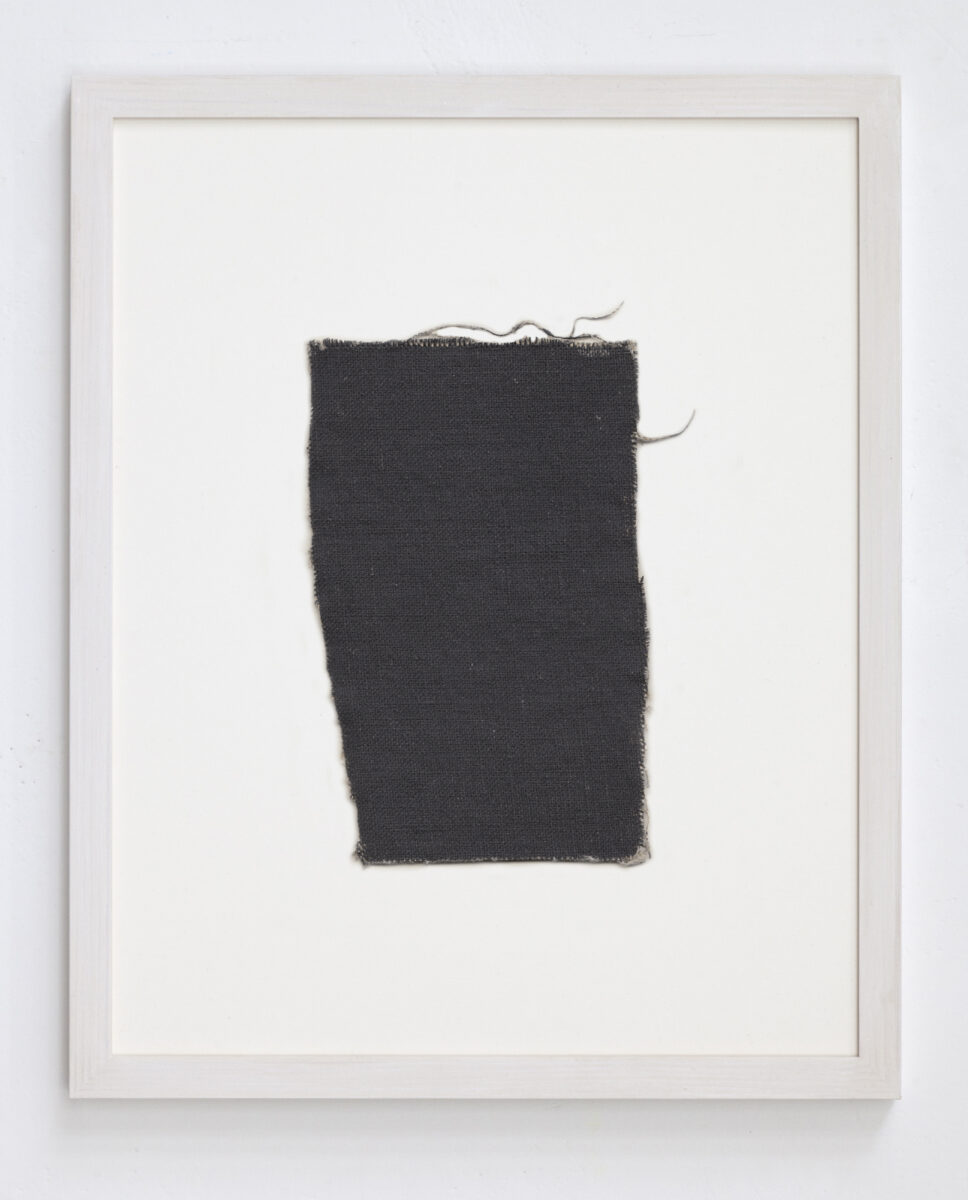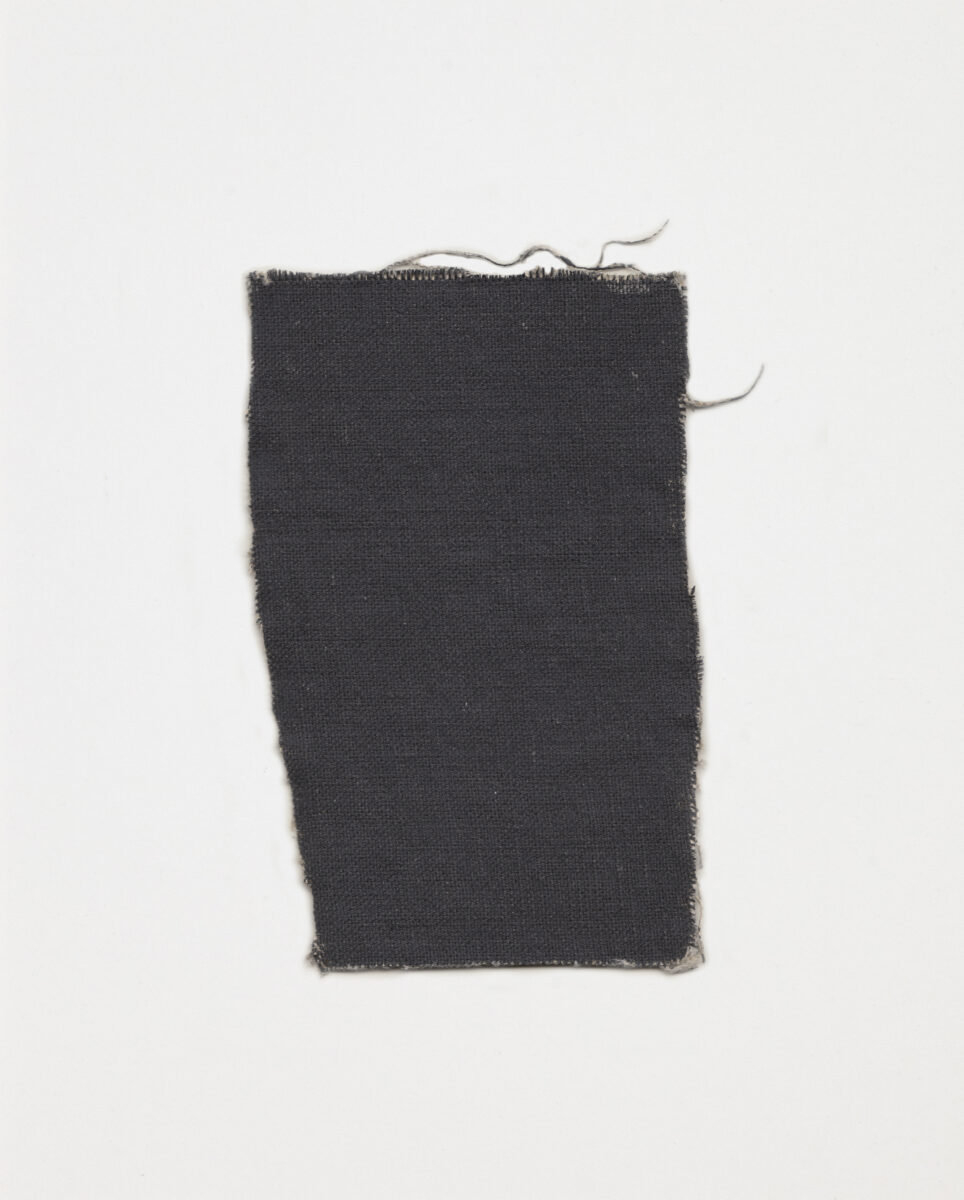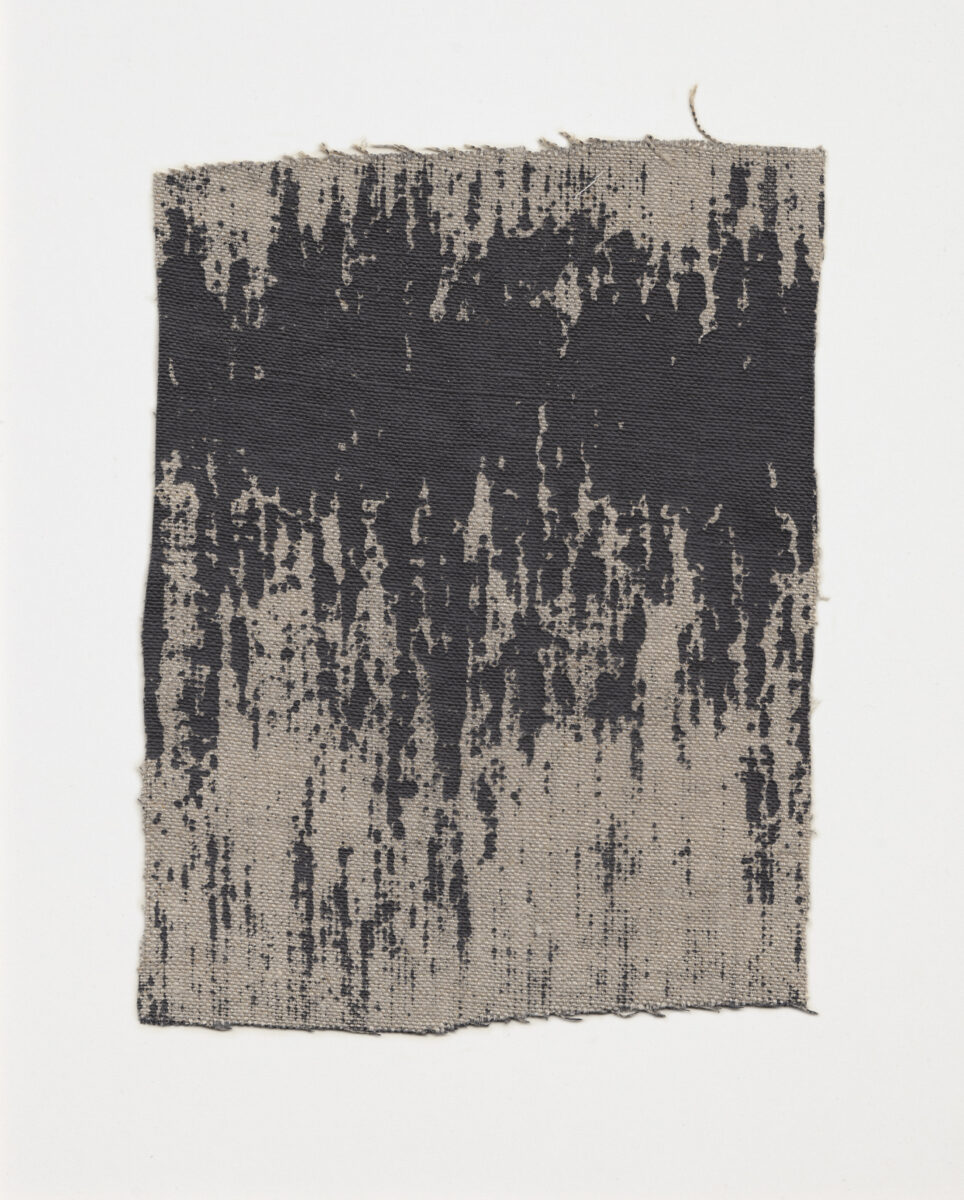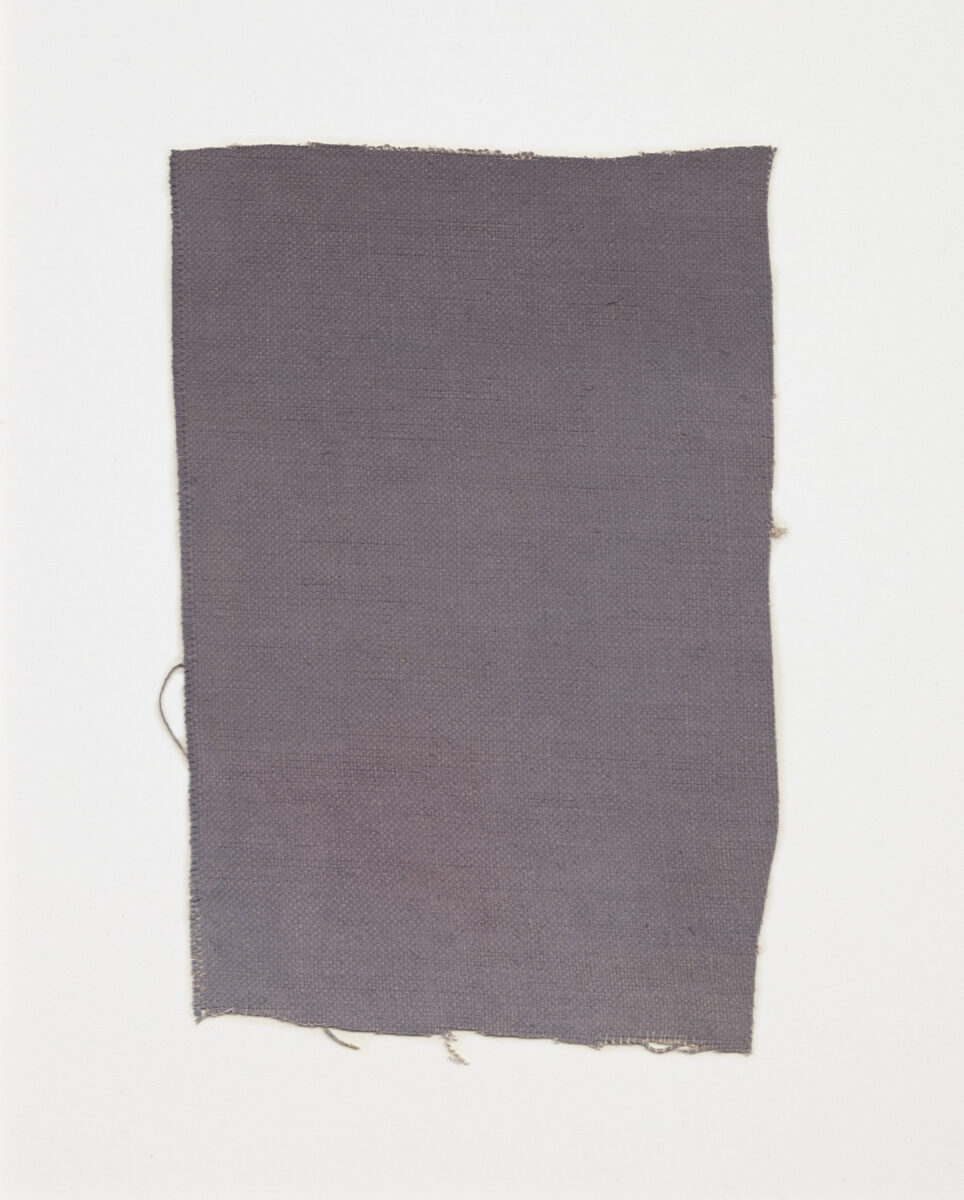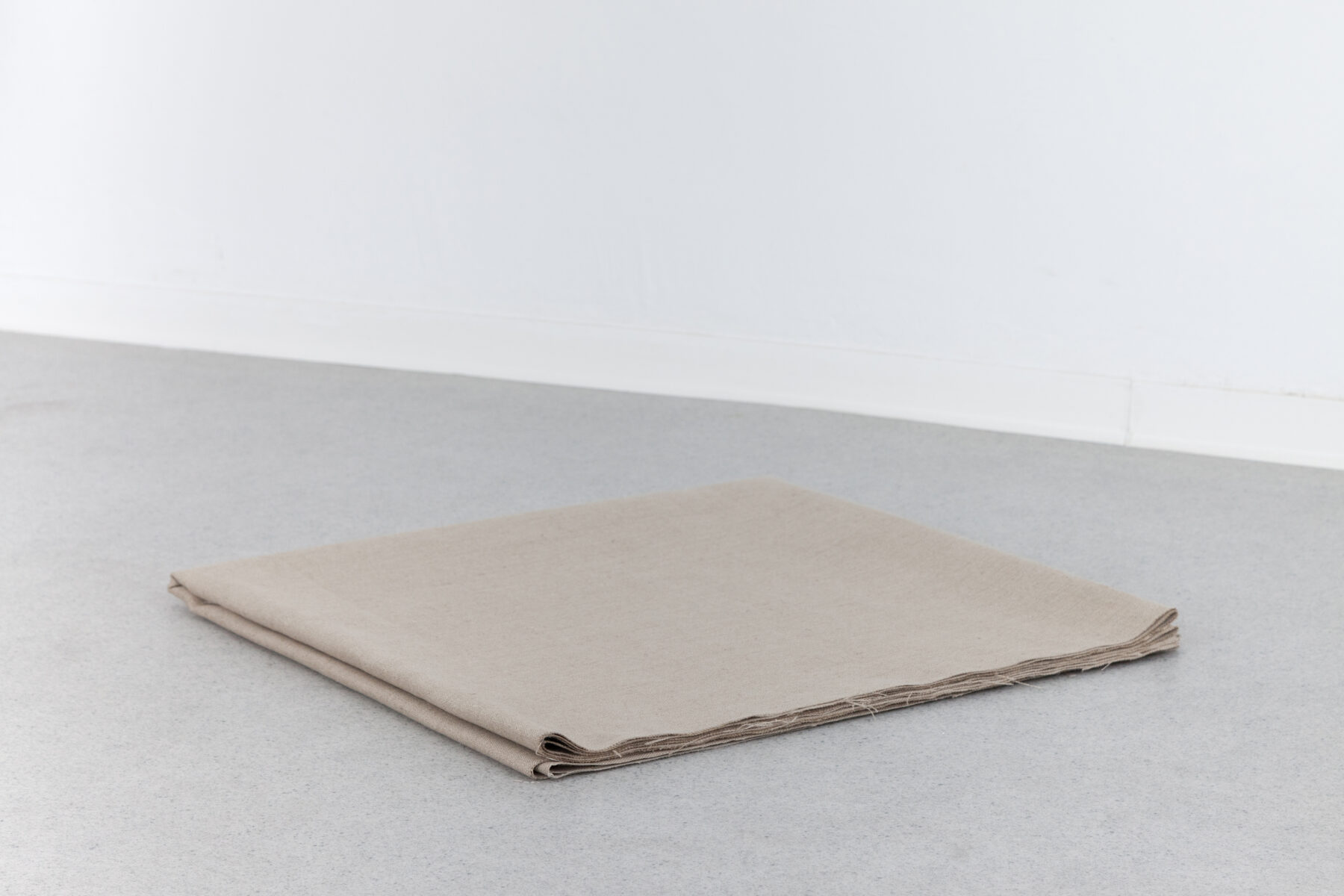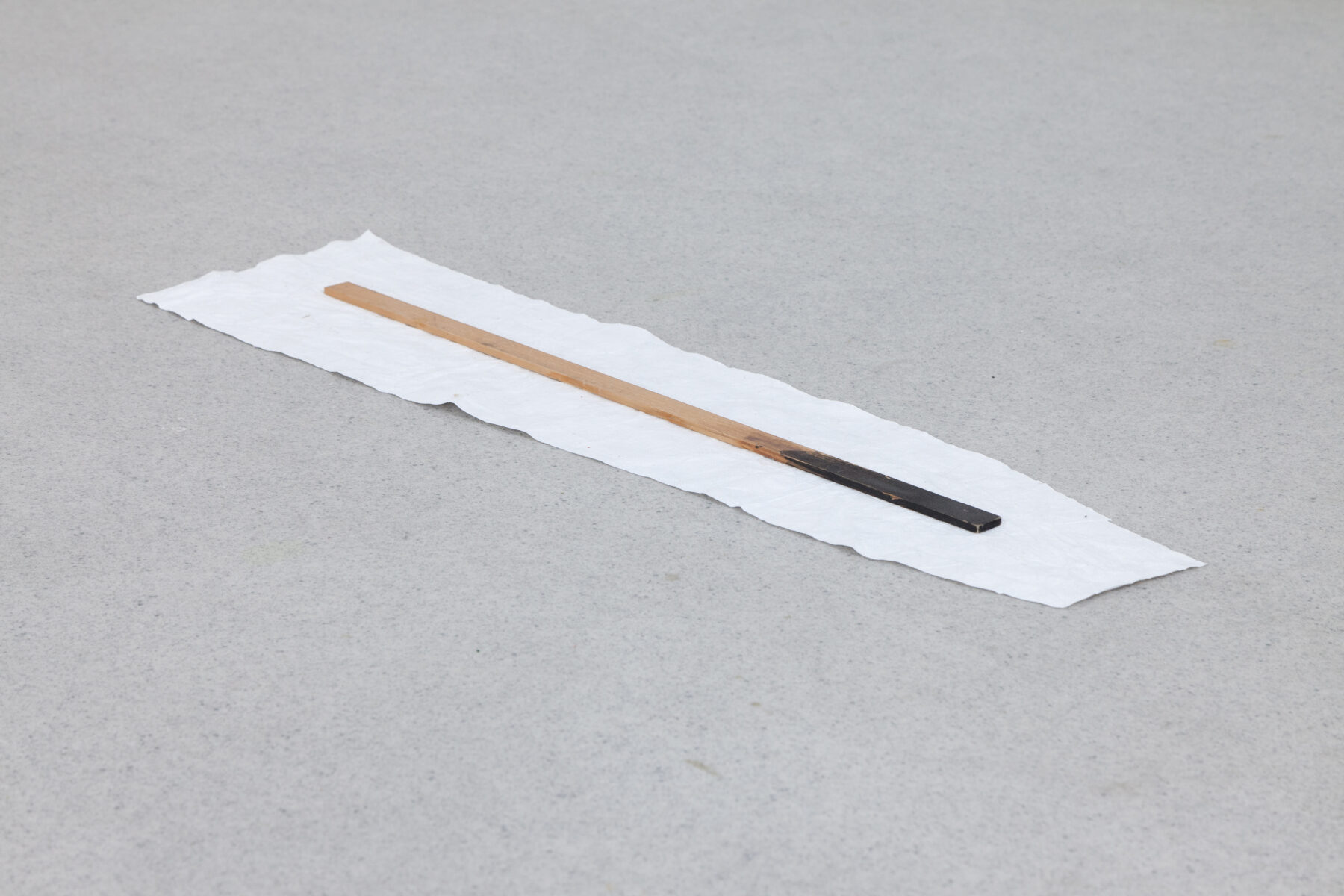Enlightenment (after the Shroud of Turin), 2021
The relic Shroud of Turin, stored in the cathedral Duomo di San Giovanni Battista, is a linen cloth measuring 440 × 110 cm. Considered and questioned as the burial shroud of Jesus, it shows the front and back of a human body, in the form of a negative image. Similar to a photograph, some researchers suggest that the cloth has been transformed in something of a photochemical process, where light has created the vague image that is visible still to this day. Others mean that the relic is created by drawing a contrary image with the use of a sculpture or relief.
Hoflund’s work with the Shroud of Turin and concept of ”acheiropoieta” (Medieval Greek “made without hand”) aims to question pseudoscience, historiography, falsification and representation, where the photochemical experiments and sculptures revise and intertwine the making of medieval relics and artistic work. Similar to the researchers assumptions and the photographic process of ”drawing with light,” his work intends to visualize the invisible.
